Gardeners evaluate and plant different types of flora. Bridge engineers design bridges. There are other differences.
There are a few places in the world where gardeners and bridge engineers join forces. One is at the Bridge of Flowers in Shelburne Falls, Massachusetts. The bridge was originally constructed to carry a trolley track across the Deerfield River in 1908 between Buckland and Shelburne Falls. It was built by the Shelburne Falls & Colrain Street Railway to help connect to the Boston & Maine and New York, New Haven & Hartford railroads at their station on the Buckland side of the river. By the 1920s, business slacked, and the trolley company stopped service. For many years, the bridge lost its main function and spanned forlorn and bare across the river.
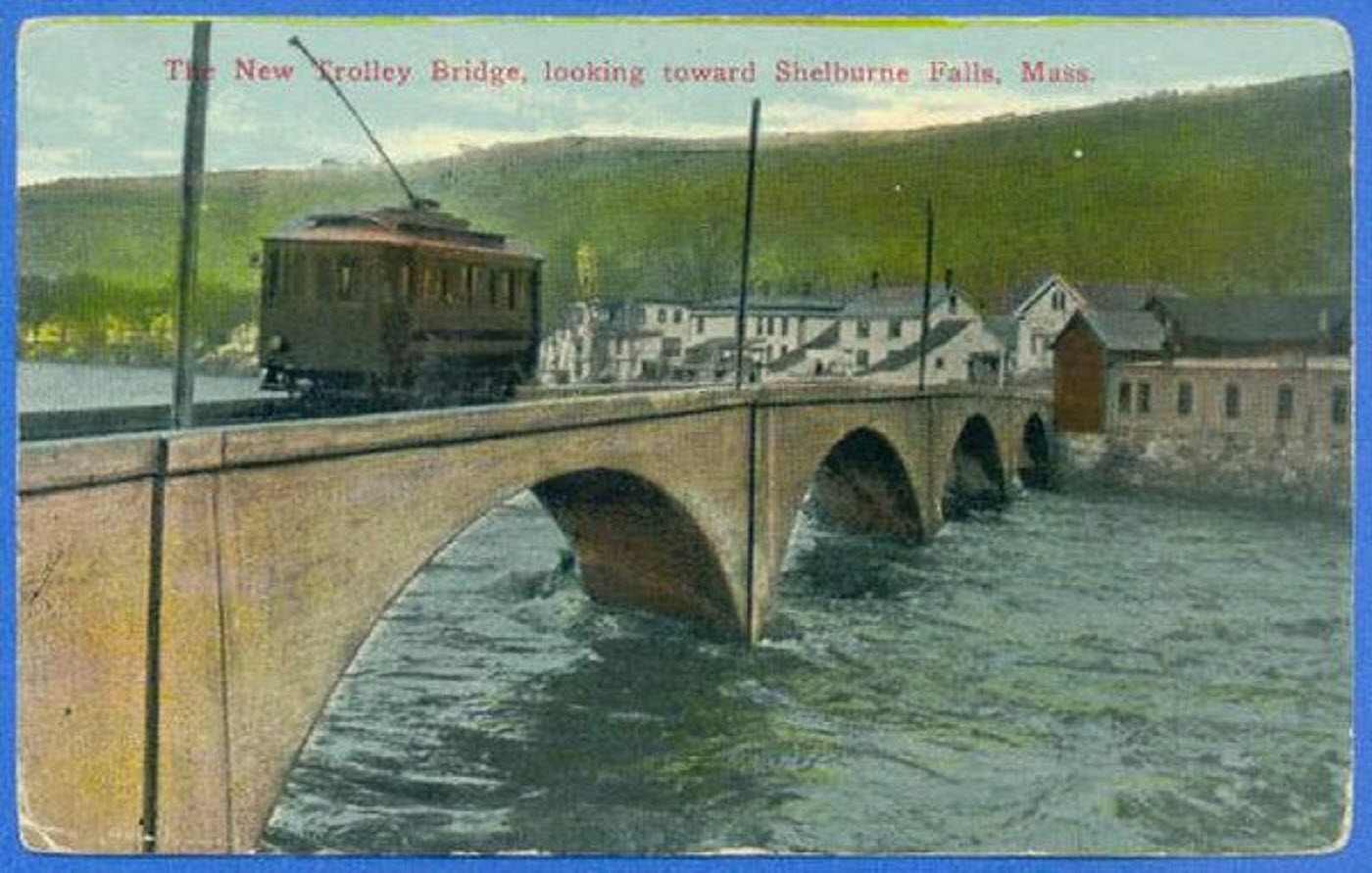
In 1929, residents of Shelburne Falls found a new use for the bridge, as a linear garden. The bridge was repurposed as the Bridge of Flowers. Lush gardens have been planted on the bridge deck. During the warm season, the bridge provides a colorful path of flowers and shade trees above the cooling and rushing waters below. It has become something to see, and over the years, many people have come to see it. The bridge is a popular tourist destination just off the Mohawk Trail.
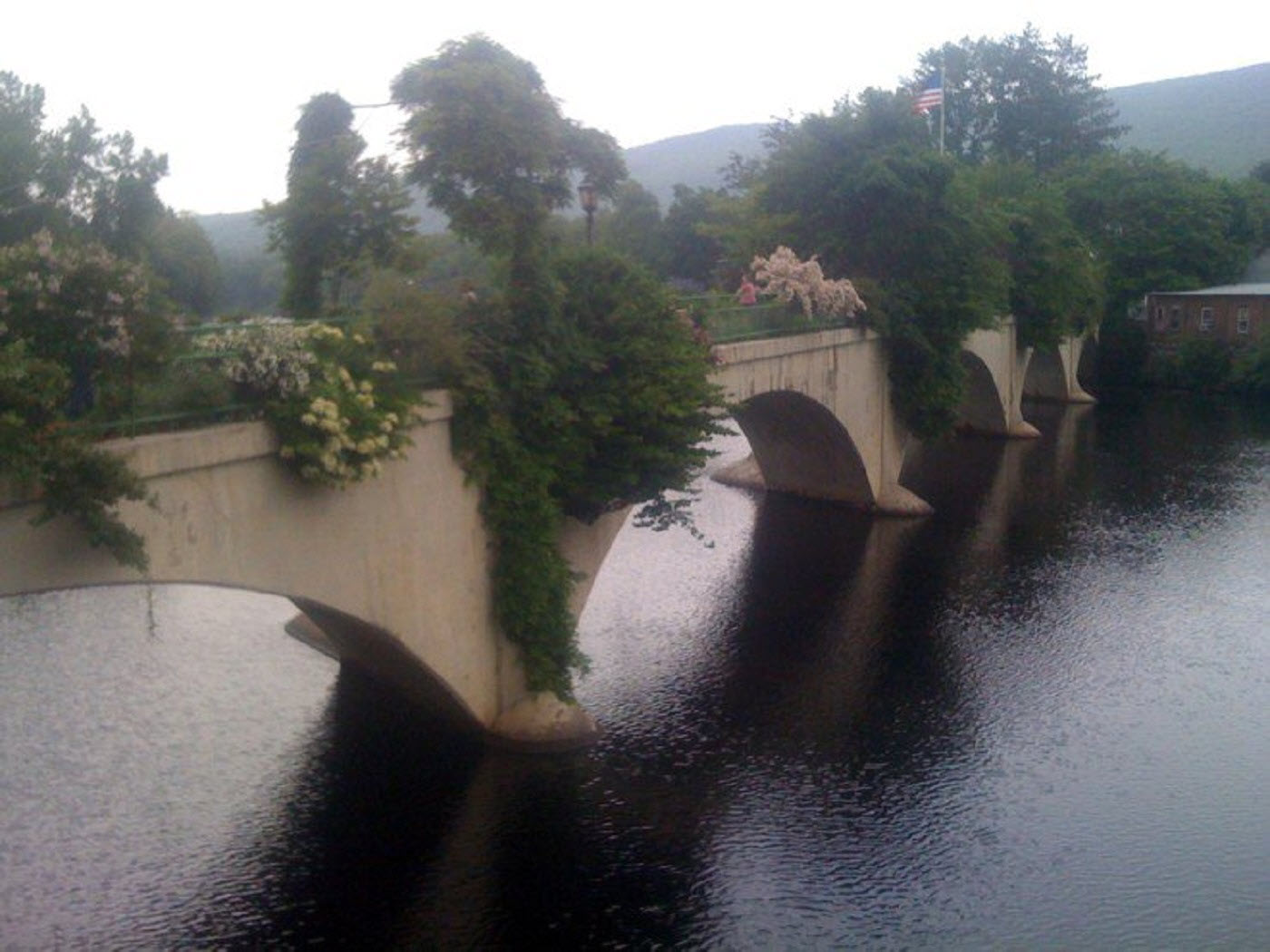
The bridge structure is a five-span concrete spandrel arch founded on stout foundations on the river’s high rock ledge. In addition to flowers, the bridge supports a major water main connecting the towns of Shelburne and Buckland. In the past, the concrete structure was subject to reconstruction and repairs. The last large repair project was performed in 1985. Recent inspections found that it was time for substantial rehabilitation work.
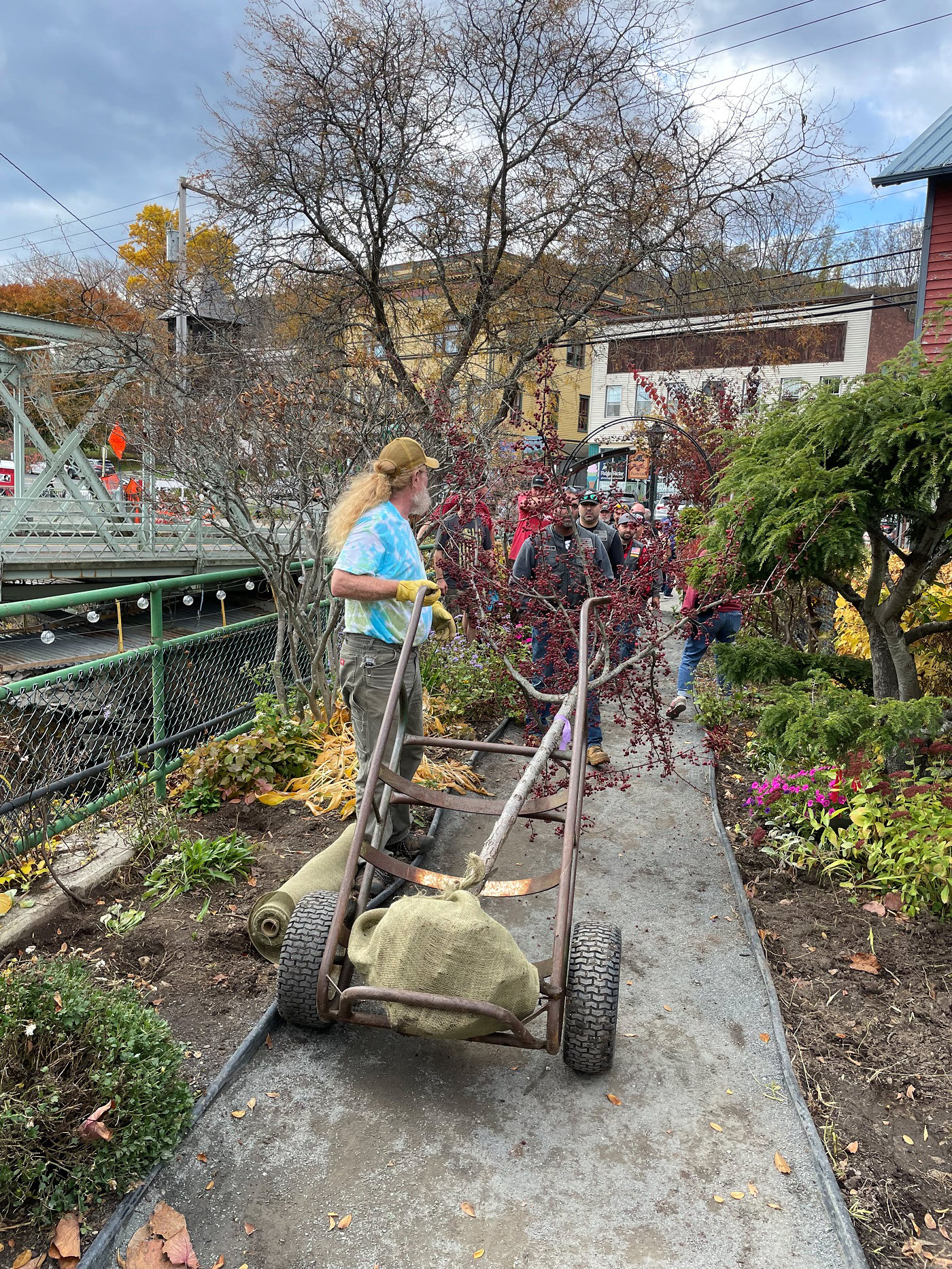
As part of a project to repair concrete spandrel walls and drains, it was necessary to move all the plants and small trees off the bridge. This would provide space for local demolition of elements to be replaced. The bridge, which is managed by the Bridge of Flowers Committee, engaged teams of local residents to move the greenery. We engineers who are working on the repair project volunteered on a Saturday last fall to help move the plants.
Andrea, Dylan, Jamie, and I arrived on a beautiful Saturday morning, ready to engage with the plantings. Our assignment was to help place and repot the flora in planting beds at a location not far from the bridge.
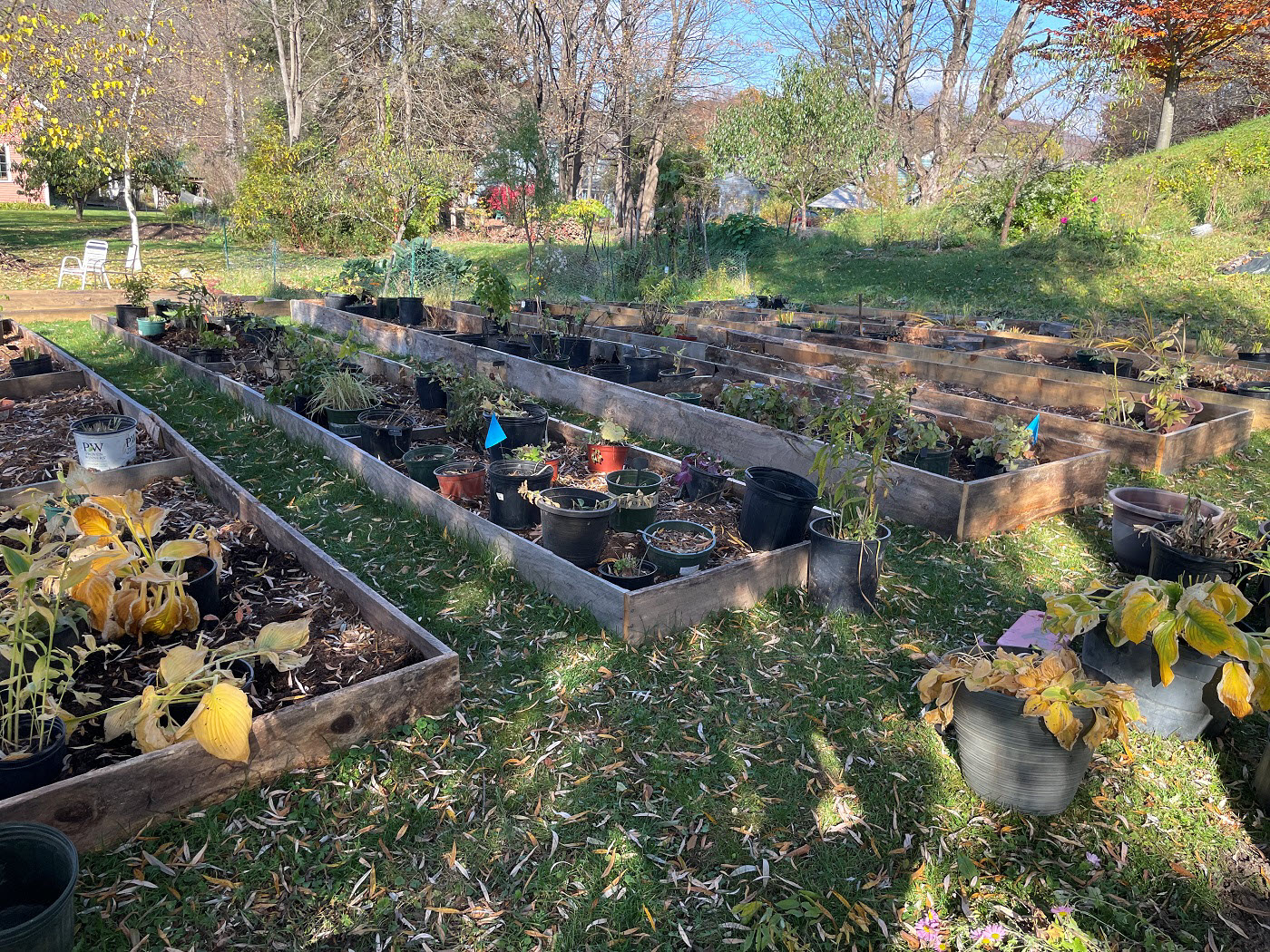
Being engineers, we were eager to learn about our work through precise, linear, criteria-based tasks objectively described in crisp detail. It turns out that gardeners (and apparently almost everyone else) do not communicate in the same style that engineers are accustomed to. So that day, we learned a bit about plantings, and a bit about our always-interesting engineering communication approach.
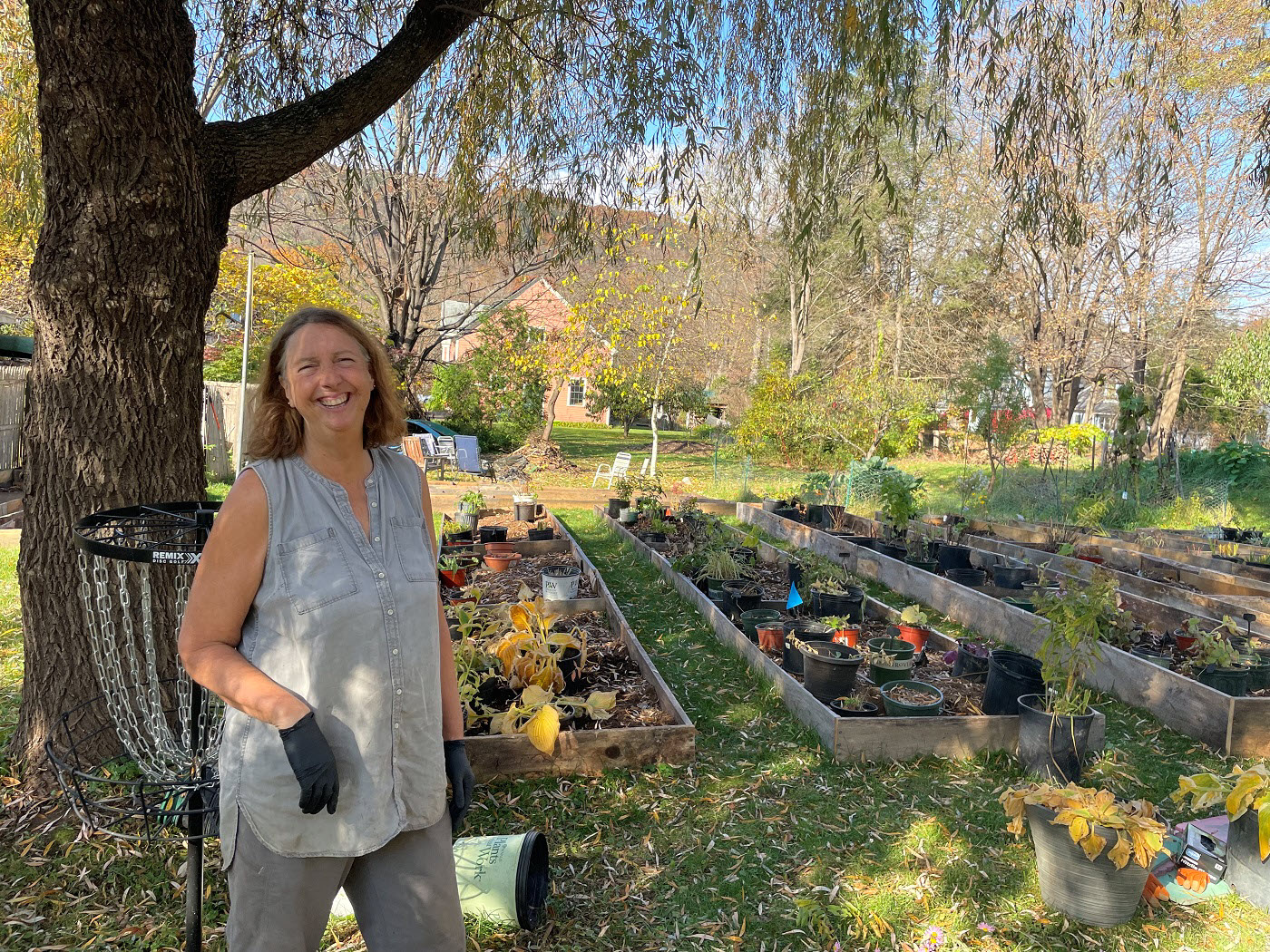
Our supervisor for the day, the bridge’s head gardener, Carol DiLorenzo, described the first task. We were requested to move several flowerpots to healing beds where the flora would peacefully reside over the winter. At that point, Carol left to work on other issues at the bridge.
Using the engineering method, the engineers interpreted the instructions and attempted to implement them.
The instructions were: “Move the flowerpots to the healing beds.”
What did that mean?
Andrea thought that it meant that the flower pots should be moved sequentially to the healing beds.
Dylan commented that not all the beds were best positioned to receive pots, so perhaps a sequential move was not optimal. Some were full, some were partially full and some were mostly empty. Maybe it made sense to not sequentially move the pots, but to move the pots to more distant healing beds in a non-linear order.
Jamie questioned whether we should move the pots in the order of size.
I questioned, “What is a healing bed?” (it looked like I was a bit further behind in interpretation of instructions).
So, we engineers debated: What were the design objectives? What were the criteria?
After discussing things a bit, we established the criteria, did a little project management and got to work. When Carol returned, she complimented us on how well we had moved the pots. But there was an issue. Some of the flowering pots were too big and stuck out of the ground a bit too far. In that case, the flower roots needed to be removed from the pots and placed directly on the healing bed.
The instructions were: take flowers out of the pots that were too big and place the roots directly on the healing bed. Carol, confident that she had engaged the team, worked in the front yard on another task.
So we were requested to move plants that were too big out of their flower pots.
What did that mean?
Dylan was not sure what the definition of “too big” was.
Jamie suggested that we should just eyeball it and do it.
We all thought about that for a moment and said, “nah.” That approach clearly was too imprecise with not enough specific design criteria. (See Note 1 below).
Andrea developed a refined definition of “too big.” If the top of the pot was higher than the top of the flower bed wall, it was “too big” and should be removed. When Carol checked in on us, we submitted an RFI:

Carol provided a response to RFI #1:

After a while, we settled on all the design criteria and developed appropriate procedures to perform the work. The flowers and pots were properly moved, mulched, and ready for winter.
We sat proudly in front of our work. I said to Carol, “Look at how nicely that epimedium has been moved and mulched!”
Carol agreed that the epimedium had been nicely placed, a job well done. She also was impressed that even a bridge engineer like me knew the scientific name of the plant. (It helped that most of the plants at the Bridge of Flowers have identification labels).
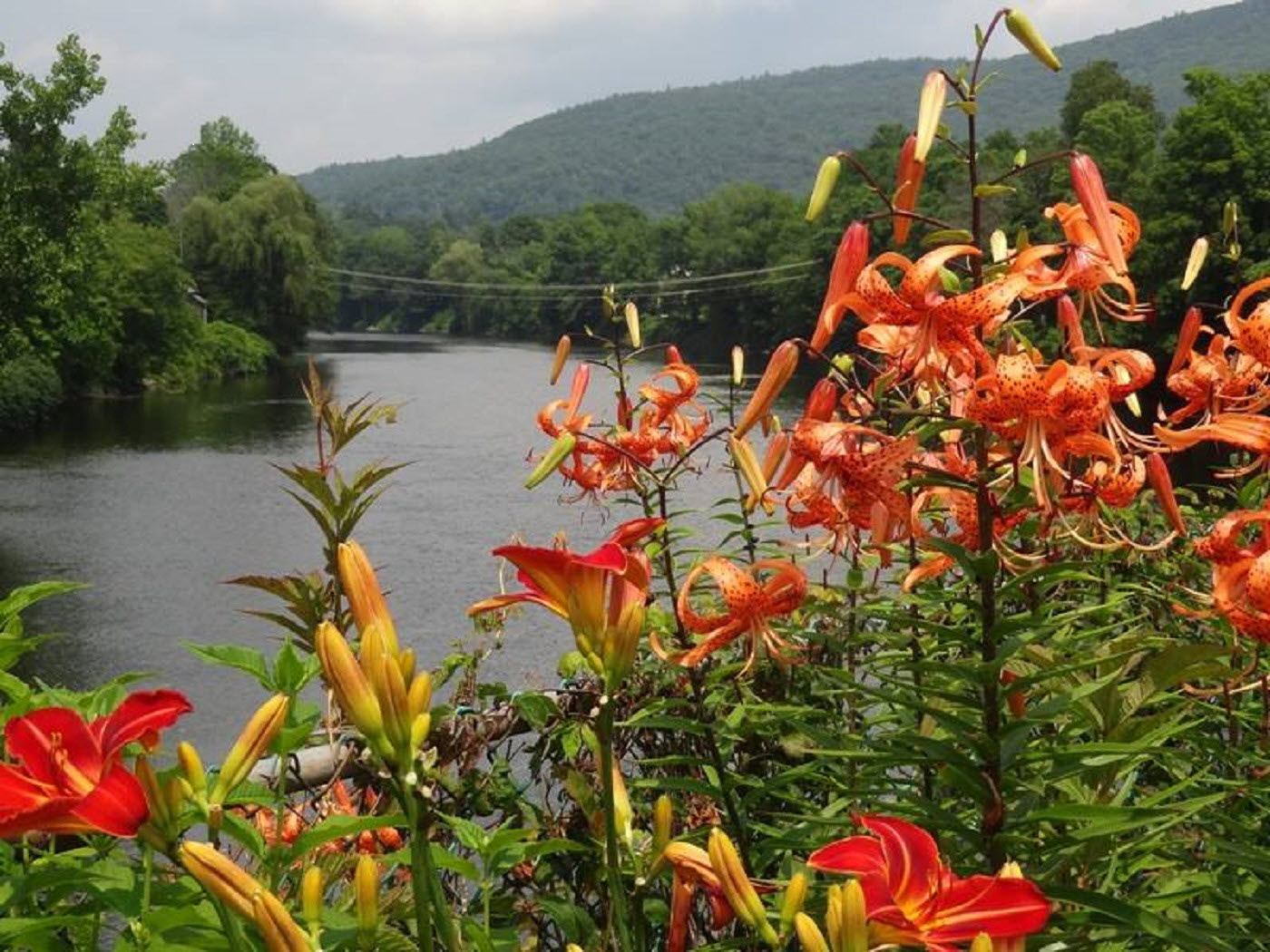
With our criteria developed and tasks defined, we happily and productively proceeded into construction activities for the rest of the afternoon. Although it may have been not that efficient at times, with one engineer moving the mulch wheelbarrow and the other three providing encouragement on how to do it. Working with the flora, we got the hang of not just the job but received a reminder on the differences between engineer-communication and how much of the rest of the world speaks. Now the plants are comfortably and safely placed on their healing beds (whatever that is) (see note 2 below) and the bridge has been prepped for the repair work to come.
Note 1:
Jamie’s approach would have been fine. Gardening is more interactive over time, and Carol commented that the plants could be adjusted in the spring as needed. I also note that throughout the afternoon, Carol provided clear guidance, but we engineers needed to translate it into “engineer-speak.”
Note 2:
Carol comments: “We ‘heeled in’ the plants. This term refers to a temporary planting situation that is really only about keeping the plant material alive for future use. No meticulous design and no ‘healing’ involved other than your healing hands! Essentially, we were just stockpiling our materials.”



